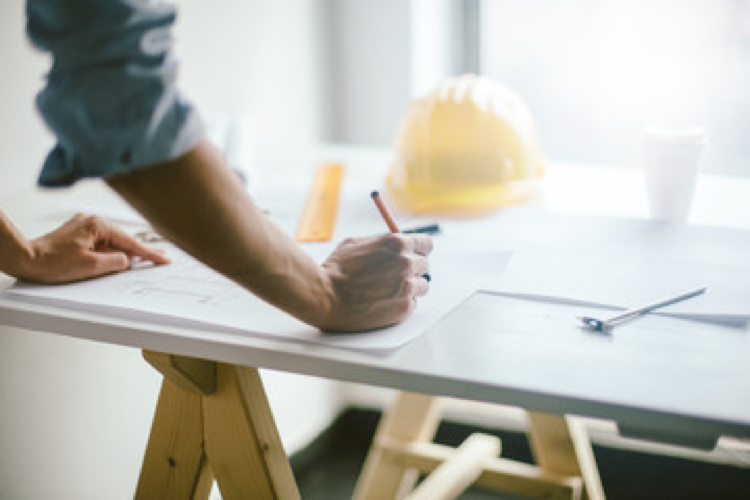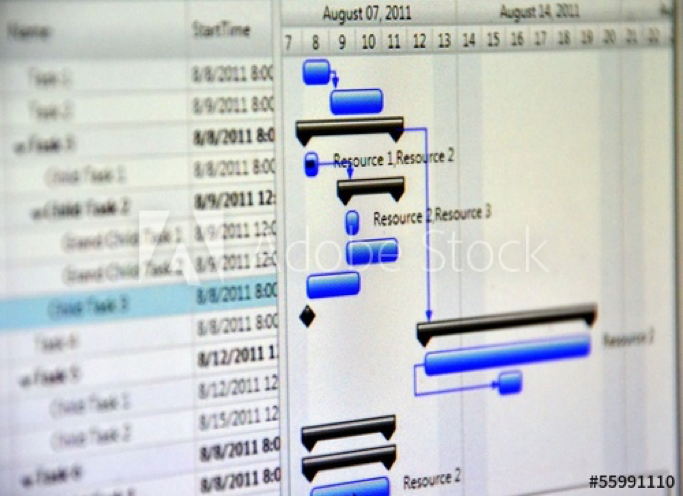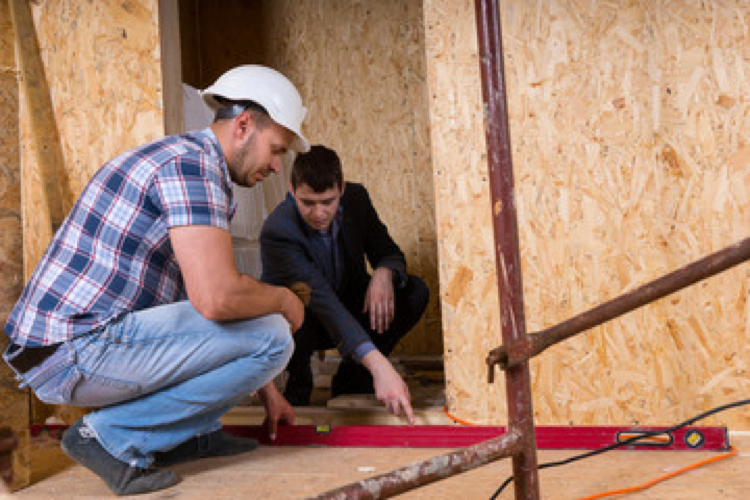If you are designing a new courthouse or renovating existing space, seriously consider budgeting time and money for the construction of a courtroom mock-up. I realize that not every courtroom project can have a full-scale model, and many computer programs allow for walk-through animation. However, nothing compares to the feeling of walking through a space and experiencing it. It can save taxpayers money in the long run and will lead to better communication between the design team, general contractor, and end-users in your courthouse planning.
DO YOU NEED A COURTROOM MOCK UP?
I experienced the benefits of a courtroom mock-up firsthand as part of the design team for a courthouse renovation project in Pennsylvania. We were working within an existing building, and the space for the new courtroom was tight. It had a low ceiling, was sort of narrow, and had a bit of an awkward shape. Because of the limitations of the space, functionality was a primary concern. During the courtroom planning phase, it was not apparent by simply looking at the design drawings that things like sightlines, attorney space, and ceiling height at the raised judge’s bench were adequate. Since the project used public funds, we did not want to find out that the design was flawed during the construction phase, as this would certainly lead to costly change orders. Realizing the uneasiness these concerns generated, the team agreed to have a full-scale mock-up of the courtroom constructed prior to finalizing the design.
PLANNING A COURTROOM MOCK-UP

Planning your courtroom mock-up to assess critical areas will lead to success
When planning a courtroom mock-up, it’s important to make the contractor aware of your intention to do so up front. Bid packages should include the request to build the mock-up and identify any unique requirements. It’s essential to know the critical items you are concerned about, and make sure they are included in the mock-up specifications. In our case, it was important to be able to experience how low the ceiling would feel in such a large space (approximately 1,600 SF), if the sightlines from the corner bench would be adequate, and whether the courtroom well would be large enough. It was also specified that a mock-up of our custom-built courtroom technology equipment cart be provided so the court technology designer could make sure it would accommodate the evidence presentation equipment.
The mock-up for our project was constructed in a nearby warehouse and built mostly of plywood,
2 x 4s, and a 2 x 2 ceiling grid according to the dimensions contained in construction documents. The review was scheduled to last one full day, and the mock-up would remain in place for one week after the review in case any special circumstances arose that would require additional review. The contractor attached a cost to the mock-up, including renting the warehouse space, and included it in the original bid documents.
The cost of a courtroom mock-up will vary depending on the amount of detail required, the material specifications (I have heard of a courtroom mock-up being built entirely of Styrofoam!), and review time. However, these costs pale in comparison to expensive construction delays and change orders that could occur if design deficiencies are not realized until after the courtroom is built.
KEEPING THE SCHEDULE IN MIND

Scheduling is an important step in saving costs
It may seem like an unnecessary cost to build the mock-up in a separate location. But this allows demolition and rough-in of building systems to continue without interruption in the actual project area. This approach saves project time and money, as the contractor does not have to wait for the space to be roughed-in, then halt the work to build the mock-up, and then wait for the review to take place in the actual space.
Lead time for ordering materials should be a primary consideration when scheduling the mock-up review. If your courtroom is planned to contain specific millwork items, exotic wood species, or special equipment that could be affected by changes to the design, the contractor should plan enough time between the mock-up review and when those items would be needed for construction. Timing is everything, and the courtroom mock-up review should be part of your contractor’s critical path so it does not result in construction delays. Obviously, the earlier the better!
STAKEHOLDER REVIEW IS ESSENTIAL

Gathering stakeholder input is key to the process
The biggest benefit of the courtroom mock-up, of course, is that it allows the users to test-drive the planned courtroom. Among other things, they can experience how the ceiling will look and feel. How the locations of the judge’s bench, witness stand, and jury box will relate to one another. Where prisoners will be brought into the courtroom. How it will feel approaching the bench. How the jurors may view the space. How technology will be integrated. It’s crucial to gather all the players that use the courtroom to review the courtroom mock-up at one time. Doing so makes the planning process more transparent and allows for all parties to participate. I can assure you this will ultimately lead to more understanding of design decisions and overall project satisfaction.
Once the mock-up for our project was complete, the judges, court staff, court reporters, law enforcement personnel, and representatives from the bar association were invited to attend the working session to review the courtroom. It was a lively discussion with each discipline pointing to adjacencies, sightlines, and millwork details that were important to them. To say they were into it would be an understatement… one of the judges even pulled out a small tape measure from his suit pocket to make sure the depth of the work surface at the judge’s bench was what he was used to in his existing courtroom!
The session was led by the design architect, and after spending the morning moving throughout the space, feedback was provided to the design team and the general contractor. Over lunch, many of the suggested changes were implemented by the general contractor. They literally took out their tools over the lunch hour (our lunch hour, not theirs of course) and cut up and re-assembled the courtroom as necessary based on the comments. The team gathered again in the afternoon to make sure the modifications would work.
One of the judges was quite tall, and when he stood at the judge’s bench, which was raised three steps, his head was uncomfortably close to the ceiling. This led to the design of the judge’s bench being dropped by one step and the ceiling being re-designed. Several other changes such as the distance to the gallery rail from the attorney tables, and the depth of the millwork at the clerk’s bench, were also adjusted and approved prior to the end of the mock-up review session. By the way, we also found that our courtroom technology cart was perfectly designed and the architect quickly approved the preliminary shop drawings submitted by the millworker. Minor suggestions were documented by the design team and were incorporated into the final design.
This valuable exercise of explaining the courtroom design to all the stakeholders, and allowing them to walk through the space, led to positive compromise and virtually complete agreement on what was expected of the final product. Upon project completion, there were no surprises – and that is a good thing!



.jpg)
.jpg)
.jpg)
.jpg)
.jpg)
.jpg)


-1.jpg)
.jpg)
.jpg)

